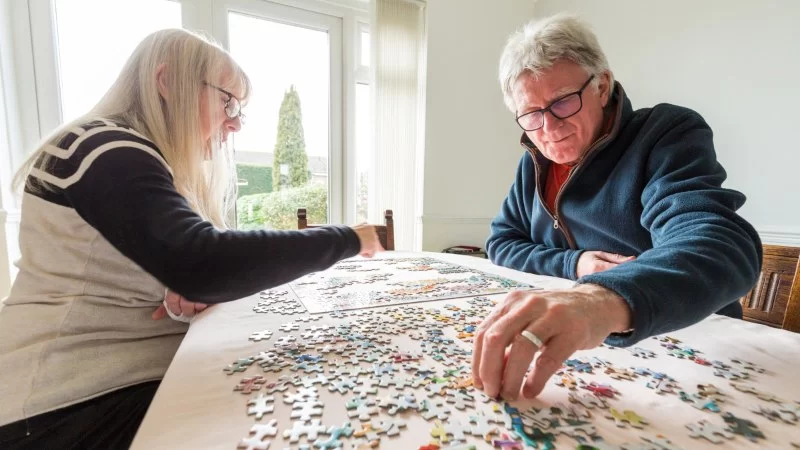
- understanding-eye-coordination-in-adults
- common-causes-of-poor-eye-coordination
- proven-strategies-to-improve-eye-coordination
- the-role-of-technology-and-therapy
- real-life-story-overcoming-visual-coordination-challenges
- expert-recommendations-and-how-to-get-started
1. Understanding Eye Coordination in Adults
Eye coordination refers to how well both eyes work together to track and focus on objects. In adults, proper eye coordination is crucial not just for reading and driving, but also for maintaining balance, hand-eye coordination, and spatial awareness. Unfortunately, this ability can weaken with age, injury, or strain—often going unnoticed until symptoms such as blurred vision, double vision, or difficulty concentrating appear.
Poor eye coordination is not limited to childhood. Adults facing stressful screen-heavy jobs or recovering from neurological issues can experience notable visual tracking problems. Recognizing the signs is the first step toward reclaiming visual clarity and confidence in everyday tasks.
2. Common Causes of Poor Eye Coordination
Eye coordination issues can stem from a variety of root causes. Among the most frequent:
2.1. Prolonged Screen Exposure
Extended use of computers and smartphones can strain the visual system, leading to convergence insufficiency or digital eye fatigue. When the eyes work overtime to align images, fatigue builds, coordination suffers, and symptoms appear.
2.2. Neurological Conditions
Injuries or disorders such as stroke, multiple sclerosis, or traumatic brain injury can directly impact the nerves controlling eye movements. Patients recovering from such conditions often report difficulties with depth perception and visual stability.
2.3. Age-Related Changes
As people age, ocular muscles naturally lose strength and flexibility, making it harder to maintain binocular alignment. Age-related diseases like cataracts or macular degeneration can further interfere with how the brain integrates visual information.
3. Proven Strategies to Improve Eye Coordination
Improving eye coordination in adults is absolutely possible with targeted exercises and lifestyle adjustments. Here are methods that have shown tangible results:
3.1. Eye Exercises and Visual Drills
One of the most effective ways to strengthen eye coordination is through purposeful eye exercises. Activities like pencil push-ups (where you slowly bring a pencil toward your nose) or figure-eight tracking help stimulate the eye muscles and improve convergence. These can be practiced daily and typically yield improvements in just a few weeks.
3.2. Integrating Movement with Vision
Incorporating movement—such as tossing and catching a ball while tracking it visually—boosts coordination. Adults who engage in sports like table tennis, archery, or even dance often report improved eye-hand synchrony. These activities require the brain and eyes to collaborate quickly, enhancing responsiveness and depth perception.
3.3. Mindful Screen Habits
Following the 20-20-20 rule (every 20 minutes, look at something 20 feet away for 20 seconds) significantly reduces digital strain. Ergonomic lighting and screen filters also help to ease the pressure on your visual system during prolonged computer use.
4. The Role of Technology and Therapy
Modern advancements have made visual training more accessible and engaging. Vision therapy programs, often prescribed by optometrists, use software and lenses to systematically improve coordination. Tools like virtual reality (VR) headsets and eye-tracking games are now utilized in both clinical and at-home settings.
If you're looking for the best vision therapy tools or professional assistance, check out Eye Docs—a trusted destination for tailored visual improvement solutions. Whether you're looking for digital exercise programs or in-office therapy referrals, they offer a wide range of expert-backed options.
5. Real-Life Story: Overcoming Visual Coordination Challenges
Take Laura, a 42-year-old graphic designer. After spending over 10 hours a day on digital devices, she began experiencing dizziness, headaches, and trouble focusing on her designs. At first, she dismissed these symptoms as normal fatigue, but they progressively worsened.
Eventually, Laura consulted a specialist and was diagnosed with convergence insufficiency. She began vision therapy through a custom program combining in-office sessions and digital drills. After three months, not only had her symptoms subsided, but she also reported improved productivity and fewer headaches.
Laura's story is a compelling example of how adult eye coordination issues are both common and treatable with the right support.
6. Expert Recommendations and How to Get Started
Experts agree that early intervention is key. If you suspect issues with your eye coordination, here’s what they recommend:
6.1. Schedule a Comprehensive Eye Exam
Only a detailed eye exam can identify the underlying cause of visual imbalance. Many adults assume their prescription glasses are the issue, when in fact, it's a coordination deficit.
6.2. Commit to a Routine
Improvement requires consistency. Set aside just 10–15 minutes daily for visual exercises and adjust your work environment to support better vision habits.
6.3. Leverage Professional Support
Not all solutions are DIY-friendly. For more serious or persistent issues, seeking professional help is crucial. At Eye Docs, you can find a network of licensed professionals offering both online and in-clinic support tailored to your needs.
Whether you're dealing with digital strain or recovering from a neurological event, improving eye coordination is entirely within reach—with patience, persistence, and the right guidance.








